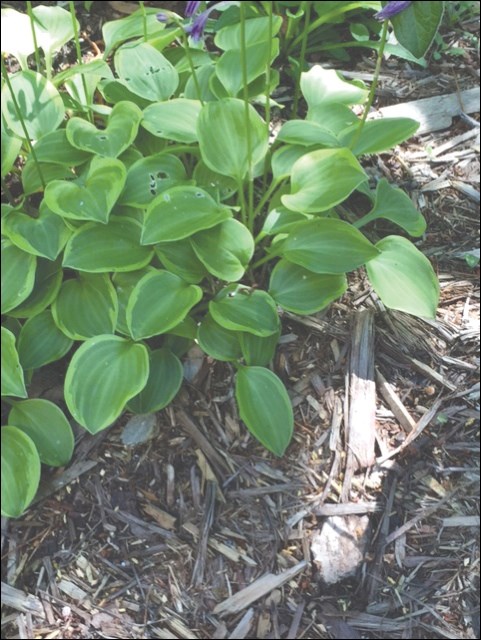You planted your perennial garden, and watched it grow – rather slowly. The first year most perennials concentrate their energy on growing roots in their new home, right up until the ground freezes. The second year you get much better performance.
Many things contribute to lower maintenance. A mowing strip between the bed and lawn, or at least a good quality lawn edging, will keep grass out of the bed.
Good rich and deep soil and a bit of fertilizer in spring will keep your bed healthy for many years.
Mulch is a beneficial material that is placed on top of the soil. Commercial varieties available to us in bags are primarily pine bark and cedar chips.
Stone chips and pebbles can also be used for mulch but do not have as many benefits.
Chipped wood and bark can be used, but require the addition of nitrogen fertilizer. Once this mulch breaks down it releases nitrogen into the soil, but initially it takes nitrogen from the soil. Wild rice husks are also a good mulch.
Mulch has many benefits. It should be applied about three inches thick; perennials and bulbs have no problem pushing through the mulch in spring.
Mulch does not provide a good medium for weed seeds to germinate, and it will smother many weed seeds in the soil when they germinate and start to grow, cutting down on weeding.
It moderates soil temperature to keep it cooler in the heat and to limit repeated frost and thaw cycles in spring and fall. It conserves moisture, requiring less frequent watering.
Organic mulch breaks down slowly adding nutrients to the soil, so mulch will need topping up every three or four years.
When you are adding plants or bulbs to the bed, putting in a few annuals or removing a plant, it is best to move the mulch aside first and then put it back after completing the task. Otherwise the mulch stays in place and no digging is required.
Regular maintenance involves deadheading when a plant has finished flowering, usually removing the flowering stalk to the base if the leaves all grow from the base, or cutting off just the seed heads if the plant has leaves on the flowering stalk, like lilies and delphiniums. This prevents self-seeding, improves appearance, puts plant energy into roots and growth rather than seed production. In some plants it can even encourage a second bloom period.
Eventually some plants will need dividing. In my next article will I will cover dividing perennials and preparing your bed for winter.
Horticulturalist Mary Wright has lived in Denare Beach for more than 30 years.




